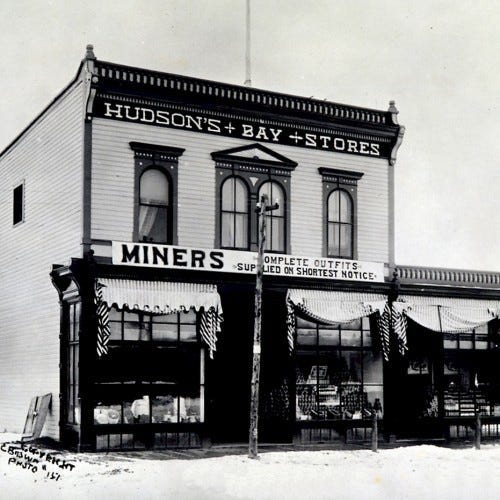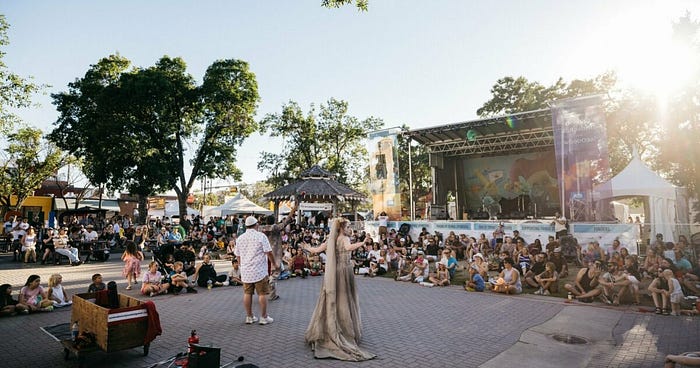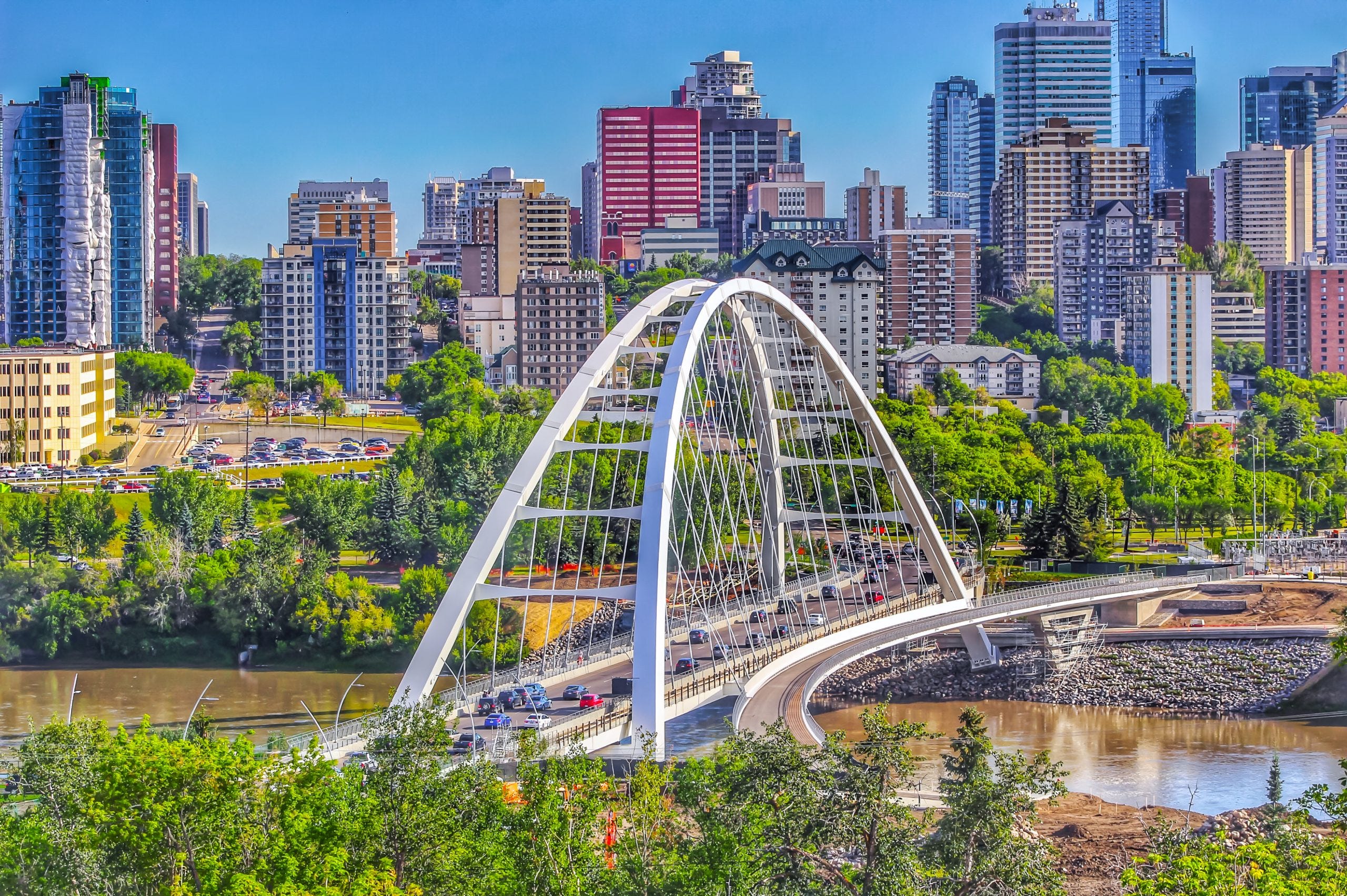What is Edmonton’s Identity as a City?
Edmonton's identity as a city is more important than you may think, as it impacts our daily lives, our communities, and especially our local economy. Let us explore.
Well, the careless passerby’s response to that question would probably be: “Who cares what Edmonton’s identity is…” Some hockey fans akin to myself would say: “Oh, we are the city of big oil refineries, hence our city’s hockey team name — The Oilers.” If you were to ask our municipal bureaucrats, they would probably suggest that Edmonton’s Cultural Events form Edmonton’s Identity in some kind of way. Notice that in all of these answers, there exists a sort of confusion about Edmonton’s real identity, and also there exists a misunderstanding of how important identity is, when it comes to a city like Edmonton. Obviously, it may seem that Edmonton’s identity is multifactorial. But, like any other city in North America, we are a city of norms and standards that are shaped by our historical and cultural roots, and economic landscape.
Edmonton’s Historical Economic Landscape
Edmonton, which is the capital of Alberta, has a rich history that is a combination of Indigenous heritage and European settlements.

In its pre-modern era, Edmonton was home to its earliest inhabitants around 3000 to 12000 BC, during the ending of the Ice Age period (Walls et al., 2007). In its modern era, Edmonton’s Indigenous heritage consisted of the Cree, Nakota Sioux, Blackfoot, Tsuut’ina, Ojibwe, and Denesuline peoples; Edmonton provided them with many natural resources including fish, medicine, as well as sedimentary rocks and sandstones, (Edmonton & Area Land Trust, 2020).
An explorer by the name of Anthony Henday, who is now the namesake of the large Anthony Henday Highway in Edmonton, was a fur trader who worked for the Hudson’s Bay Company. Upon Henday’s arrival in Edmonton in the Autumn Season of 1754, he helped establish many trading posts around the periphery of Edmonton; evidently by the year 1795, Edmonton had established multiple trading posts on behalf of the Hudson’s Bay Company (Switzer, 2006).

This blend of Indigenous and great colonial history is still evident in Edmonton’s cultural fabric, reflected in landmarks like Fort Edmonton Park and the many Indigenous cultural monuments of our city. For instance, Fort Edmonton Park’s 1919 Baldwin Steam Engine and Train monument is mainly associated with Edmonton’s role in the fur trade. Nowadays throughout our city, we conventionally use Edmonton’s fragile, yet more-or-less functioning Light Rail Transit (LRT), mainly for the purpose of transportation, and to occasionally aid the residence of several homeless people from time to time. Edmonton’s LRT is often used by more Edmontonians on a daily basis as a consequence of the affordability crisis in Canada, which has now enabled more people to take public transportation, just to save money on gas. As a result of this modern trend in our city to use the LRT for this purpose, we tend to forget the original purpose of trains in our city — they used to be a mode of transporting retail goods and raw materials, around our city. Instead of a poorly paid Amazon delivery worker showing up to your house in the middle of the day to give you a package, it was a train that delivered moderately affordable goods to your local retail outlets and stores.
Edmonton’s Historic Industries
While the oil and gas industry has historically been a significant part of Edmonton’s economy, the city is also a burgeoning center for education, healthcare, and technology.

Edmonton’s historic economic landscape has been significantly shaped by the oil and gas industry, a cornerstone of the city’s growth and prosperity. Central to this industry is Enbridge, a major energy transportation company that has deep roots in Edmonton. Founded in 1949, Enbridge has developed into one of the largest energy infrastructure companies in North America, playing a crucial role in the region’s economic development by providing employment and facilitating the transportation of oil and gas (Enbridge, 2024).
The University of Alberta, one of Canada’s leading research institutions, is a cornerstone of Edmonton’s educational and innovative landscape, attracting students and researchers globally. Moreover, Edmonton’s health sector is a major employer, with cutting-edge medical research and facilities like the Stollery Children’s Hospital and the Cross Cancer Institute.Which has revolutionized healthcare in Edmonton. Established in 1968, the institute has become a leading center for cancer research, treatment, and education, attracting top medical professionals and researchers. Its advancements in oncology have not only improved patient care but also positioned Edmonton as a hub for medical innovation and excellence, contributing to the diversification and strengthening of the city’s economic and healthcare sectors.

Edmonton’s Historical Cultural Roots
Edmonton is often dubbed “Canada’s Festival City” due to its vibrant calendar of cultural events. Although, in its intended purpose of propping up tourism in Edmonton, these cultural events relate to historic cultural practices associated with our beloved city.

For instance, Edmonton’s “Flying Canoe” Event, is based on an Indigenous-French legend. It is based on a nobleman who enjoyed hunting so much that he occasionally refused to attend church on Sunday. In doing so, this nobleman was punished and had to figure out how to fly a canoe through snowy terrain with galloping horses and howling wolves chasing him. It is obvious that this sort of a tail would incite criticism of organized religion during that time, especially amongst our universities, if they were to hear of this tale. It is possible that those who organize this sort of an event, are intending to prop up our city’s tourist attractions. But it is also possible that those who created the Flying Canoe Event, created it with the intention of commemorating a nobleman who simply wanted to just enjoy his own passion for hunting. Such a tale often goes unrecognized, but it does paint a picture of the cultural heritage of our city, in particular reference to our French and Indigenous cultural heritage.
Edmonton’s Artistic Cultural Roots
The Edmonton International Fringe Festival, one of the largest of in North America, and the Edmonton Folk Music Festival are just two examples of how the city upholds our artistic cultural roots. These events not only draw visitors from around the world but also play a crucial role in defining Edmonton’s identity as a lively, culturally rich city.

Edmonton’s Fringe Festival features started in 1982, with the help of a Chinook Theatre Director by the name of Brian Paisley. His inspiration for starting this event, derived from the Edinburgh Festival Fringe in Scotland (Fringe Festival History, 2012). Upon its inception, Edmonton’s Fringe Festival hosted 200 live performances.

The Edmonton Folk Music Festival, an annual event that has become a beloved cultural tradition, originated in 1980 in Edmonton, Alberta. The festival was founded by Don Whalen, who aimed to create a community-focused event that celebrated diverse folk music genres (Edmonton Folk Music Festival, 2024). Over the years, the festival has grown significantly in size and reputation, attracting world-renowned musicians and a dedicated audience from across Canada and beyond. Held every August at Gallagher Park, the festival offers stunning views of the city skyline and an intimate atmosphere that fosters a strong sense of community among attendees. Known for its commitment to showcasing both established and emerging artists, the Edmonton Folk Music Festival has become a key event in the folk music calendar, celebrated for its progressive performances, socially-liberal environment, and dedication to promoting the rich cultural tapestry of folk music.
With all of that being said in regards to our Historical Economic Landscape and Cultural Roots, we can finally come up with the assertion that Edmonton’s Identity as a city is based on a cultural pastime. This cultural pastime is solely made up of European and Indigenous Cultures that instilled folktales, norms, customs, traditions, standards, and laws, that are now heavily ingrained in our identity as a city.
Challenges to Edmonton’s Identity as a City
The city of Edmonton faces a myriad of challenges in preserving its unique identity amidst rapid changes and growth. One of the foremost challenges is managing the impact of immigration. Immigration is a social change, and by convention, any change has its pros and cons. In terms of immigration to Edmonton or any other place in Canada, the people that migrate to our cities can either fit into the norms associated with Canadian society, or they may choose to be outkasts. Although, it is vital to recognize that not all immigrants coming to our city are international. Most of them are actually seeking interprovincial migration to our city due to the recent wave of economic disparities impacting the working class of Canada, as a result of the affordability crisis. To give you a structural visualization of how many people generally migrated to the city of Edmonton in the recent couple of years, from both domestic and international migration, let us look at some stats.

As of 2024, according to both Statistics Canada and the Canadian Real Estate Association, it is apparent that immigration to Edmonton has skyrocketed. However, as a result of this skyrocketing number you do not necessarily need Statistics Canada or some public interest group to tell you that there has been more migration to Edmonton. Simply just get out of your house, and go out for a walk to any public place you frequent, and you will seemingly find it to be a lot more crowded than it was 8 years ago.
Immigration to our city obviously has enriched the city with diverse cultures, languages, and traditions. However, this diversity also poses challenges in maintaining a cohesive urban identity. Balancing the integration of new residents while preserving the historical and cultural essence of Edmonton requires thoughtful policies and community engagement.
Edmonton’s population growth in recent years has been fueled by both international and interprovincial migration. According to Statistics Canada, Edmonton saw a significant increase in its population, with a notable influx of immigrants from South Asia, Africa, and the Middle East. This diversity has enriched Edmonton’s cultural landscape, evident in neighborhoods like Mill Woods, known for its multicultural community.
Economic opportunities in Alberta are another pivotal factor influencing Edmonton’s identity. The city’s economy has traditionally been anchored by the oil and gas industry. But fluctuations in these sectors have prompted efforts to diversify. The push towards economic diversification, including investments in technology, health, and education sectors, is reshaping the economic landscape. This transition, while necessary for long-term sustainability, can lead to tensions between preserving traditional industries and embracing new ones. Although in any case, despite these talks of more investments, Edmonton has seen a significant lack of any industry. Maybe if you were to travel to the outskirts of Edmonton(Suburban Edmonton) you would see some manufacturing, automated agriculture, and so on. But if anything, Edmonton is currently a professional, white collar atmosphere that features the most inactive academic class. Which is a huge contrast to Edmonton’s historic Economic Landscape of being a center that was devoted to oil and gas, and large retail hubs much like the historic Hudson’s Bay Company. As a result of a lot of professionals migrating to Edmonton in recent years, Edmonton’s historic presence of Big Business and Industriousness fled to the city of Calgary, where regulation incentivizes commerce, and does not seek to discourage it, much like the municipal regulation of Edmonton.
Urban development and housing also play critical roles in shaping Edmonton’s identity. Rapid urbanization and the demand for housing have led to extensive development projects. These developments, often characterized by modern architecture and infrastructure, sometimes clash with Edmonton’s historic neighborhoods and natural landscapes. Striking a balance between growth and preservation is essential to maintaining the city’s character.
Edmonton faces the complex task of preserving its identity amidst immigration, economic diversification, urban development, and environmental challenges. The city’s ability to navigate these factors while honoring its heritage and embracing change will define its future identity. Its identity is a tapestry woven from its rich history, cultural vibrancy, and economic diversity. The city’s festivals, educational institutions, and multicultural population all contribute to a conflict that is arising about Edmonton’s true urban identity. As Edmonton continues to grow and evolve, its ability to integrate new residents and innovate in various sectors will be key to maintaining its unique character and ensuring a prosperous future for all its inhabitants. Especially when it comes to how the veteran residents of Edmonton will be able to deal with the Edmonton’s newcomers from Ontario and elsewhere.
References
Alberta Source (2010). “Fort Edmonton and Fort Augustus”. Alberta Source. Archived from the original on December 8, 2010. Retrieved April 9, 2020, from https://www.albertasource.ca
City of Edmonton (2021). Edmonton’s Population History. Retrieved from https://www.edmonton.ca/city_government/facts_figures/population-history
Edmonton & Area Land Trust (2020). amiskwaciy-wâskahikan (Edmonton) History. Retrieved from https://www.ealt.ca/
Edmonton Folk Music Festival Society (2024). Edmonton Folk Music Festival. Retrieved from https://www.edmontonfolkfest.org
Edmonton Heritage Council (2024). Heritage & Culture. Retrieved from Edmonton Heritage Council Website
Edmonton Journal (2023). “Edmonton historic board urges city keep heritage in mind as older buildings demolished” Retrieved from https://edmontonjournal.com/news/local-news/edmonton-needs-to-remember-and-value-history-as-it-grows-historical-board
Enbridge. (2024). Our history. Retrieved from https://www.enbridge.com/about-us/our-history
Fort Edmonton Park (2024). Fort Edmonton Park: History Brought to Life. Retrieved from https://www.fortedmontonpark.ca/plan-your-visit/attractions/train-and-streetcar
Fringe Theatre Adventures (2024). Edmonton International Fringe Festival. Retrieved from https://www.fringetheatre.ca/festival/
Government of Alberta (2024). Economic Diversification. Retrieved from https://www.alberta.ca/alberta-advantage#:~:text=Alberta%20is%20the%20economic%20engine,different%20sectors%20of%20our%20economy.
Mahaffy, C. (2007). Edmonton Book of Everything. MacIntyre Purcell Publishing Incorporated. Retrieved from https://books.google.ca/books?id=hK2tAAAACAAJ&pg=PP1&redir_esc=y
MacGregor, J. G. (1975). Edmonton: A History. Hurtig. ISBN 978–0–88830–100–0. Retrieved from https://www.amazon.ca/Edmonton-history-James-Grierson-MacGregor/dp/0888301006
Statistics Canada. (2024). Population and Demographics. Retrieved from https://www.statcan.gc.ca
Statistics Canada. (2018). Immigration and Ethnocultural Diversity in Canada. Retrieved from https://www12.statcan.gc.ca/nhs-enm/2011/as-sa/99-010-x/99-010-x2011001-eng.cfm
Switzer, J. (2006). Fort Edmonton. The Canadian Encyclopedia (online ed.). Historica Canada. Archived from the original on May 3, 2014.
Walls, M., & Mahaffy, C. (2007). Edmonton book of everything: Everything you wanted to know about Edmonton and were going to ask anyway (p. 9). MacIntyre & Purcell. ISBN 978-0-9738063-4-2.





